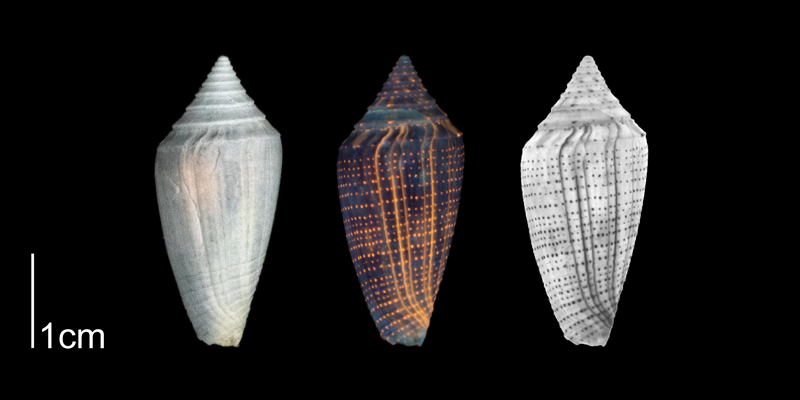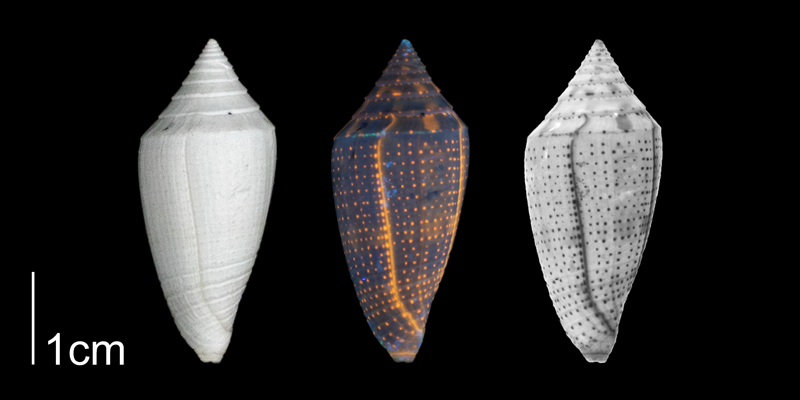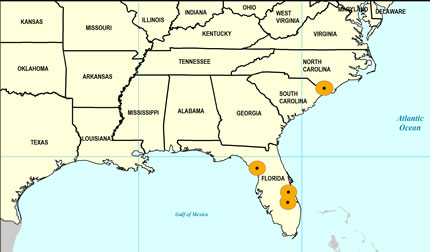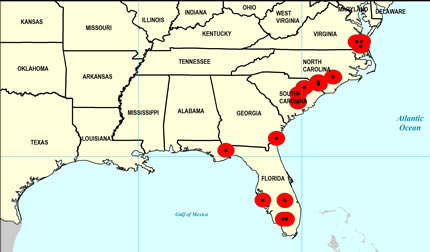
Conasprella marylandica
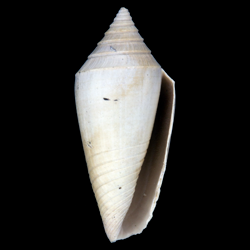
- Phylum: Mollusca
- Class: Gastropoda
- Order: Neogastropoda
- Family: Conidae
- Genus: Conasprella
- Species: Conasprella marylandica (Green, 1830)
Geological Range
Late Pliocene to Early Pleistocene; Extinct.
Paleogeographic Distribution
South Florida to Virginia.
Remarks
Original Description (from Green, 1830, p. 273-274):
"Le C. marylandicus est une espèce fossile trouvée par J. Finch; coquille pyriforme , avec 8-10 sillons près de la base; spire élevée, pointue."
To access this description in its original formatting through the Biodiversity Heritage Library, click here.
Synonymous with Conus marylandicus.
Stratigraphic Occurrences
- Early Pleistocene
- Caloosahatchee Formation (S. FL)
- Nashua Formation (N. FL)
- Waccamaw Formation (NC)
- Late Pliocene
- Duplin Formation (SC, NC)
- Duplin / Raysor formations (GA)
- Jackson Bluff Formation (N. FL)
- Raysor Formation (SC, NC)
- Tamiami Formation (Pinecrest Beds) (S. FL)
- Yorktown Formation (VA)


